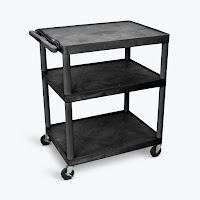Light Panels
Photographers, illustrators, artists, retailers, and drafters have one thing in common: the need for clean, bright lighting. Whether the task is tracing or displaying works, there needs to be the right kind of lighting equipment. This is where light panels come in.
Also known as LED panel lighting, light panels are a popular source of illumination among various professionals. They are designed to provide the right amount of evenly dispersed lighting for different tasks, such as tracing, drafting, displaying products, and viewing works. High-quality LED light panels can even let you view the finest or tiniest details of your work without difficulty.
If you’re using a light panel for taking photos, you have to place the light panel where you need your lighting. Then, tilt it in a way that your subject can receive optimal light. Product photographers, for example, usually opt to put their light panels behind the subject of the photo.
If you need a light panel for drafting, you can prop it up on your work surface and tilt it to a landscape or portrait orientation. After turning the light panel on, put the sheet of paper on its surface and start working or viewing your illustration.
What’s great about LED lighting is that it can provide uniform lighting with a bright white hue, which is sufficient for tracing and illustration. Another great thing about LED lighting is that it’s eco-friendly and long-lasting. Some light panels even have LED bulbs that can last for up to 50,000 hours, which means you don’t have to frequently replace them.
Most high-quality light panels typically come with a plexiglass surface rather than glass. Plexiglass or acrylic glass is a lightweight material that’s considered a shatter-resistant alternative to fragile glass.
Light panels with plexiglass surfaces are typically lightweight, yet they can still withstand some weight and evenly distribute light.
Also known as LED panel lighting, light panels are a popular source of illumination among various professionals. They are designed to provide the right amount of evenly dispersed lighting for different tasks, such as tracing, drafting, displaying products, and viewing works. High-quality LED light panels can even let you view the finest or tiniest details of your work without difficulty.
How to Use a Light Panel
There are a variety of ways to use light panels, and it all depends on your needs and preferences.If you’re using a light panel for taking photos, you have to place the light panel where you need your lighting. Then, tilt it in a way that your subject can receive optimal light. Product photographers, for example, usually opt to put their light panels behind the subject of the photo.
If you need a light panel for drafting, you can prop it up on your work surface and tilt it to a landscape or portrait orientation. After turning the light panel on, put the sheet of paper on its surface and start working or viewing your illustration.
Factors to Consider When Buying a Light Panel
Light Source
The first thing you have to look for when choosing the right light panel is its light source. Normally, you would want to find one that makes use of LED.What’s great about LED lighting is that it can provide uniform lighting with a bright white hue, which is sufficient for tracing and illustration. Another great thing about LED lighting is that it’s eco-friendly and long-lasting. Some light panels even have LED bulbs that can last for up to 50,000 hours, which means you don’t have to frequently replace them.
Size
Needless to say, choosing the size of the light panel depends on your needs. If you’re stationed in your office and rarely go out, you can get a light panel that’s wide enough to help you fulfill the task. But if you’re often on the go, you can find a wide range of portable light panels that are lightweight and easy to bring anywhere you go.Surface
Last but certainly not least, you have to choose a light panel with a durable surface. You wouldn’t want to have an easily breakable light panel, now would you?Most high-quality light panels typically come with a plexiglass surface rather than glass. Plexiglass or acrylic glass is a lightweight material that’s considered a shatter-resistant alternative to fragile glass.
Light panels with plexiglass surfaces are typically lightweight, yet they can still withstand some weight and evenly distribute light.

Comments
Post a Comment